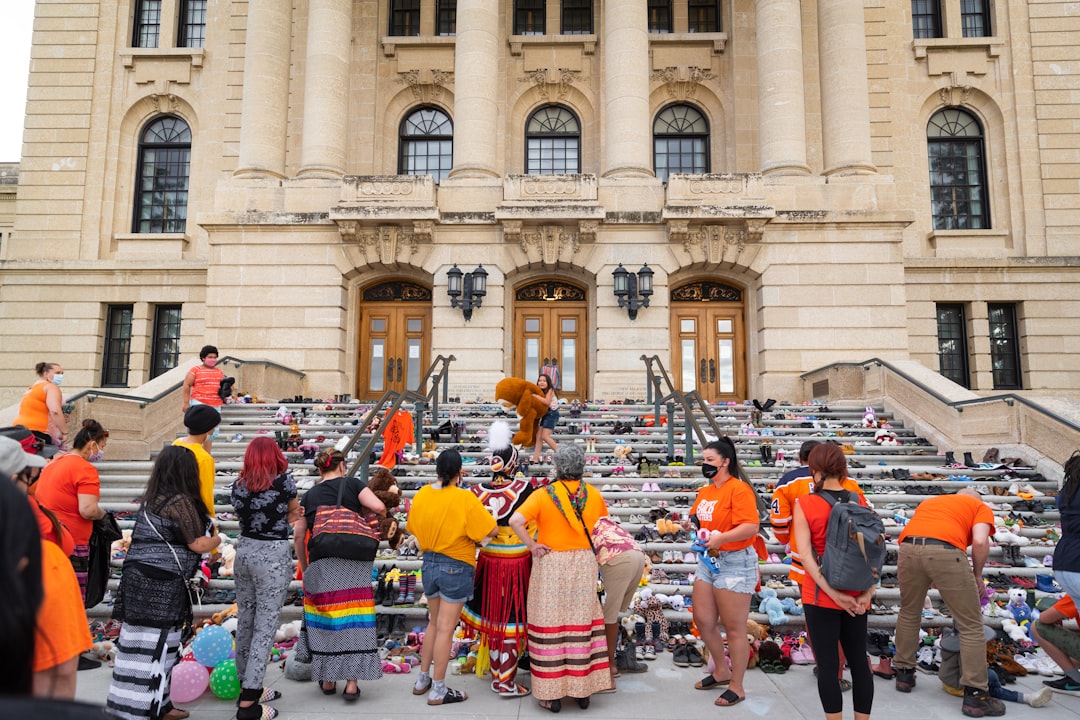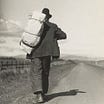Seeking the Truth About Residential Schools
There are a few researchers in Canada seeking the truth, and growing documented evidence that debunks the myths and misinformation hurtful to indigenous Canadians.

By James McCrae, Nina Green and James Pew
This article originally appeared in the Dorchester Review
TRUTH SEEKERS are Canadians who care deeply about doing the right things to address the wrongs history has dealt indigenous people. They care enough that they do not support the spreading of lies, exaggeration, and conspiracy theories. Such mischief makes indigenous people suffer more, encourages bitterness, and works against a better relationship with their fellow Canadians.
Truth seekers ask questions about Indian Residential Schools so as to better understand indigenous history so all Canadians can participate in the healing that is required before we can move forward together. But those who have questioned any part of the official narrative established by the Truth and Reconciliation Commission, the federal government, and legacy media have been met with either silence or the outrageous accusation that they are engaging in denialism.
Truth Seekers are not deniers. Truth seekers celebrate the good parts of colonization and regret the wrongs. Weighing the two fairly is an exercise in historical objectivity. Far too many of today’s academics prioritize activism over scholarship, and have departed from the objective truth-seeking traditions that developed from centuries of enlightenment rationality.
On Sept. 12, a comparatively unknown professor at the University of Manitoba named Sean Carleton tweeted a warning about a thoroughly debunked “conspiracy theory” which claimed that Queen Elizabeth II took ten children from the Kamloops Indian Residential School (KIRS) on a picnic in 1964, and that the children were never seen again. Carleton noted that this debunked story was again being disseminated as a result of the attention focussed on the Queen’s death, and emphasized that the story was completely false.
We could not agree more. The story is a total fabrication.
Sean Carleton then asserted, “… all kinds of IRS misinformation needs to be confronted, not just denialism.” In another tweet he stated, “Putting truth before reconciliation, then, also means challenging misinformation like the Queen conspiracy theory.”
Again, we couldn’t agree more.
What Professor Carleton did not mention in his tweets was that this widely-circulated story involving the late Queen’s kidnapping of ten children from the Kamloops Indian Residential School originated on Vancouver’s Skid Row in the 1990s when a residential school Survivor, William Combes, told it to a defrocked United Church minister, Kevin Annett, who promulgated it both before and after Combes’ death in 2011.
Judging from his tweets, Professor Carleton’s anxiety was focused on the likelihood that since this debunked “conspiracy theory” had originated with a residential school Survivor, the renewed scrutiny it was receiving in the wake of the Queen’s death might cast doubt on the credibility of other stories told by Survivors about murders, disappearances, and secret burials at residential schools.
In that respect, Sean Carleton’s concern has merit because there have been many tales told by Survivors about the Kamloops Indian Residential School (KIRS) which stretch credulity to the breaking point. In addition to his bizarre tale about the Queen, William Combes also claimed he had seen babies being thrown into the school furnace and that he and another student had witnessed the nighttime burial of a child in the apple orchard at the school.
Other former KIRS students have admitted to making up stories about the apple orchard. Emma Baker attended KIRS between the years 1952-1956, and in a recent interview with CTV said she and her teenage friends heard rumours of a graveyard, and “We didn’t even know if it was true,” and “We used to make up stories about the graveyard being in the apple orchard.”
Audrey Baptiste, who was at KIRS for part of the time that William Combes was there, claimed in a Fifth Estate documentary that she and other students were taken on a Sunday morning walk past four boys hanging in a barn.
Similarly bizarre and improbable stories of murder have been told by alumni of other Indian residential schools. Doris Young arrived with her twin sister at the Elkhorn Indian Residential School in 1944 when she was three years old, and was there until the school closed in 1949, when she was eight. In 2012 she told a Truth and Reconciliation Commission hearing that she and other students witnessed the murder of a fellow student, saying “there was all these screams, and there was blood over the walls.”1 As an adult, Doris Young, who would necessarily have had to witness this murder between three and eight years of age, had the RCMP investigate her claim. However, as she admitted to the TRC, the RCMP found no evidence of a murder having been committed. Nonetheless, the TRC published her account in its written report.
Over time, all these stories told by Survivors about kidnapping, disappearances, murder and clandestine burials of students at KIRS and other Indian residential schools appear to have become conflated with the “knowing” of local “Knowledge Keepers.” As Dr Sarah Beaulieu stated in her presentation on July 15, 2021, her ground penetrating radar (GPR) search in the apple orchard at KIRS was predicated on this “knowing,” a “knowing” which had almost certainly evolved from Combes’ and Annett’s exaggerations. Now, new evidence suggests that what Dr Beaulieu’s ground penetrating radar (GPR) likely detected was the school’s former septic field, which included 2000 feet of trenches filled with hollow clay drainage tiles underneath the area where the unmarked graves are said to be.
Sean Carleton took his professional training at Simon Fraser University (BA, MA) and Trent University (PhD). Apart from Canadian and indigenous history, "settler colonialism" and the "history of capitalism," he has a marked interest in comics and graphic novels. He teaches courses with the titles "Inventing Canada," "History of Indian Residential Schools," and a crowd-pleaser called "Getting Graphic with the Past: Comics, Graphic Novels, and History."
He has said he wants to “debunk” conspiracy theories. If so, why does he stop at challenging only the preposterous and already-disproved Queen Elizabeth “conspiracy theory”? If he truly believes that “all kinds of IRS misinformation need to be confronted”, then he must agree there is much jarring and egregious misinformation which must be confronted in the stories mentioned above.
Yet instead of confronting that misinformation, Carleton, in an apparent effort to silence anyone who wants to correct the historical record, urges his followers to witch-hunt something he calls “denialism.” He writes: “If you see examples of IRS conspiracy theories/misinformation/denialism, please report them. You can also send them to me (DM, email etc) as I am creating an archive to document and debunk.”
But do self-described experts like Carleton have any interest whatever in debunking bizarre stories about murders and secret burials at residential schools, or in debunking the following false claims?
(1) TRC Commission Murray Sinclair told the United Nations in 2010 that “For roughly seven generations nearly every Indigenous child in Canada was sent to a residential school.” That statement is false. Fewer than one-third of school-aged Indigenous children attended residential schools.
(2) Mr. Sinclair also told the United Nations in 2010 that nearly all Indigenous children were forced to attend residential schools. There is abundant evidence that that is a myth.
(3) The National Centre for Truth and Reconciliation’s Memorial Register lists the names of children who “died at or went missing from” Indian Residential Schools. In fact, most of the children listed on the Register died in hospitals, at home, or in accidents on their home reserves far away from their schools. The NCTR list includes the name of Helen Betty Osborne, murdered while a student at a public high school. It includes the names of children who died in house fires and other accidents away from the schools. It includes the name of a child whose father ran over him with the family car, and the name of a boy who died when a tree fell on him on his home reserve, again far away from his school.
(4) Assembly of First Nations Grand Chief RoseAnne Archibald told the BBC that residential schools were specifically designed to kill children, and that the bodies of sixteen hundred children have been recovered so far. In fact, not one body has been “recovered” and there is no real evidence of such wild claims.
If Professor Carleton’s call is to challenge misinformation, truth seekers are hard at work doing just that. Unlike some activist-academics who want us to believe the unbelievable, truth seekers are researching documented evidence and “debunking” much of the official narrative, a narrative that is full of exaggeration, myth and misinformation, a narrative that is hurtful to Indigenous Canadians.
Why don’t activist-academics do the same?
____
Thanks for reading. For more from this author on indigenous issues, read - Historic septic dig casts doubt on Kamloops residential school burial site claims (substack.com)
TRC Report, Vol. 5, p. 189.




I particularly liked the debunking of Murray Sinclair and his commission’s wild assertions.
Certainly, there are many "Truth Seekers" but unfortunately, the main- stream media is not one of them. Many of the "poor me" articles appearing on the federal victim hood holiday contained the following fallacious propaganda statement:
"Until 1997, the Residential School System saw indigenous children ripped from their homes and families".
All that was missing was the background theme music from Law and Order. The reality is that sensationalism sells news, and the goal is not to inform but to alarm. In the words of Shakespeare.
WHOSE TONQUE SOE'ER SPEAKS FALSE, NOT TRULY SPEAKS, WHO SPEAKS NOT TRULY, LIES